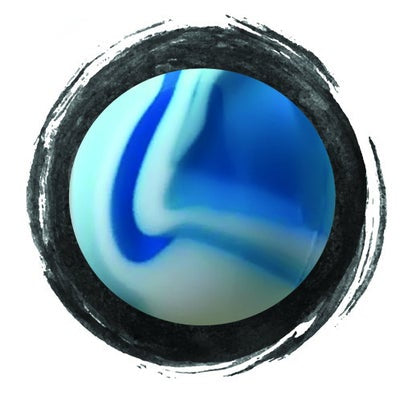Fusing Temperatures
FUSING
I use Oceanside Fusible COE 96 glass for my murrini unless specifically stated in the listing. I have six Paragon Kilns of various sizes and they all fire just a bit differently. So with that said, the temperatures below (in Fahrenheit) are what I use and should be a good starting point for you, but of course, all kilns are very different!
The height of my snipped murrini will be very different depending on if I am tack fusing, contour fusing, or full fusing murrini onto my project. In a light tack fuse (which is usually my go-to temp for all murrini with an outer shape that I don’t want to change) my murrini is snipped about as thin as I can get it. 2- 3mm tops. In a full fuse, quite often my murrini will be 5-6mm tall so they spread out bigger. More about this below.
With full packages of a single murrini design I recommend making a few TEST TILES first before you cut up all your murrini. The goal is to be able to get as many pieces out of your cane as possible...and very often 2-3mm is all you need to get the look you want. Cut up a couple of one inch (3mm) glass squares and stack two together for your full fuse tests and just a single piece for your tack fuse tests. The temperatures are what I use in my Paragon kilns. All kilns are different so this will be a good starting point to help find the correct top temperatures that work best in your kiln.
TACK and CONTOUR FUSE TEST: Keep your little murrini chips thin (2-3mm) on your test tiles. Test a light tack fuse vs. a contour fuse to see which temperature gives you the best results (for example keeping the points of leaves pointy). In my kiln, a top temperature of 1305 degrees with a 5 minute hold is perfect for lightly tack fusing and not changing the outside shape at all, ex. to keep the points of my leaves pointy or other fun shapes looking as-is. A lot of my murrini have an outer shape. These are not intended for heavier fuses as outer shapes round out quickly in hotter temps. 1330-1350 is more of a contour fuse that will start to soften/round the edges of the murrini. Even a contour fuse could be too much heat for leaves. Hence the importance of a test tile.
FULL FUSE TEST: Here you are checking to see if 3mm or 5-6mm is needed to achieve the look you are going for. In some cases, the taller your murrini chip, the more it will spread/bloom out. I like to use just one Murrini chip per full fuse test to give it room to fully spread out. Try a 3mm chip on a 6mm test tile and a 5-6mm chip of the same murrini on a 6mm test tile to see how different they look. This way you’ll know what size to snip up the rest of your murrini. Sometimes 3mm is all you need, so no need to use more than necessary as we want to get as many chips from our cane as we can! If your test tiles are clear glass, then flip it over to see how it looks from the underneath. It will be very different as well! In a full fuse my top temp is 1450 for 15 minutes. Remember, if you set 5-6mm murrini on only 3mm of glass, your murrini may full fuse as a “hump”. If your murrini sets on 6mm of glass, then in a full fuse they’ll BLOOM out and be flat with your surface.
Anneal time is important when using murrini. Longer anneals are equally important whether tack fusing or fully fusing even if your project is small and thin. An extended long-soaking anneal is necessary to eliminate potential tensions between the murrini and the underlying/surrounding glass. Oceanside’s firing schedules are a good place to start for proper annealing but extend your anneal soak with murrini by at least 50%. Remember, don’t rush it or peek until the project is room temperature.
Below is a photo of a test I ran using 4 little panels all exactly the same but fused at different temps. The base color is Vanilla Cream as it was also a "reaction" test as well. You can see how murrini with outer shapes round out quickly. After 1330, the leaves lose their points and the hearts and ripple petals become round. You can also see that the round murrini with an inner flower bloom out into a spectacular flower!
In the fusing process of the second leaf, note both inner and outer reactions. Vanilla Cream (VC) was the vein in the leaf. The hotter it got, the more pronounced the inner reaction. In the full fuse, you can also see a dark ring around the outer edge between the leaf and the VC base.
The underlying glass was only 3mm, so also a fun test to see how much the glass pulls in a full fuse.
NOTE: In a full fuse test, the murrini are best on a single square of glass instead of being too close to another piece of murrini like I have here. They were not able to fully "bloom" when they bump into their neighbor's space.

